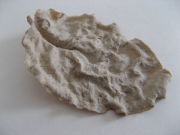Elizabeth Stanek
Artist Statement / Bio
Ideas concerning the nature of 'place' and questions about the relationships between our social and physical environments have been the basis of my work over many years. I am interested in how the visual, tactile and spatial aspects of natural environments effect psychological, social and political interpretations of our worlds. And more recently I have been concerned about how our social worlds are becoming more divorced from the physical realities that are its basis.
Over the past few decades I have created collaborative and site specific installations both inside and outdoors, layered photographic images connecting bodily systems to the ecosystems of the natural world, cast sculptural forms directly in the landscape that explore connections between the human body and our physical environment, and created installations that reference the changing dynamics of the natural world. Often in my sculptural work, surface and texture emphasize our tactile experience, forms derive from nature and the human body, and processes include incorporating materials that are manipulated to change over time, referencing the dynamics of larger systems.
For years I have been interested in broadening sensitivity to the ecology of our natural environment by connecting it to our personal experience of the human body. Upon retirement after 25 years teaching art, I find my focus shifting to include an avid study of native plants, and volunteer work at a seed bank for rare and endangered plants, as well as monitoring endangered populations insitu. Direct action in the world has become a priority, and I am presently uncertain what form that will take in my art practice. A recent project dispersed objects and ideas through personal and individual interactions to draw attention to the nature of our connection with the natural world.










